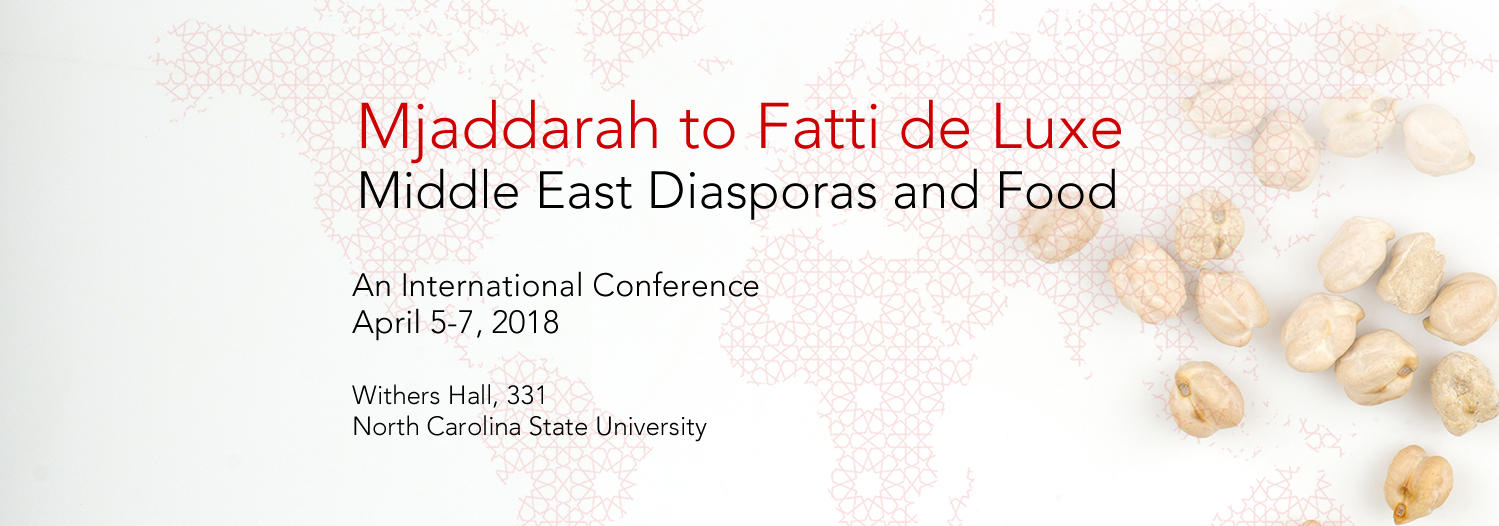Archive Spotlight: New Sources on Commerce and Business
The relationship between Lebanese immigrants and commerce is often shrouded in myth. As part of their efforts to gain acceptance into American society, scholars such as Kalil Bishara argued in the immigrant press that “Syrians” were descendants of sea-faring Phoenicians and thus had a unique talent for commerce.[1] Additionally, the rags-to-riches “Peddler Myth” has become an archetype in communal memory and scholarship of the twentieth century. Since its inception, the Khayrallah Center has conducted and supported research dedicated to complicating these narratives. Two recent additions to the Khayrallah Center Archive offer new avenues of understanding into the commercial and entrepreneurial realities of Lebanese immigrants.
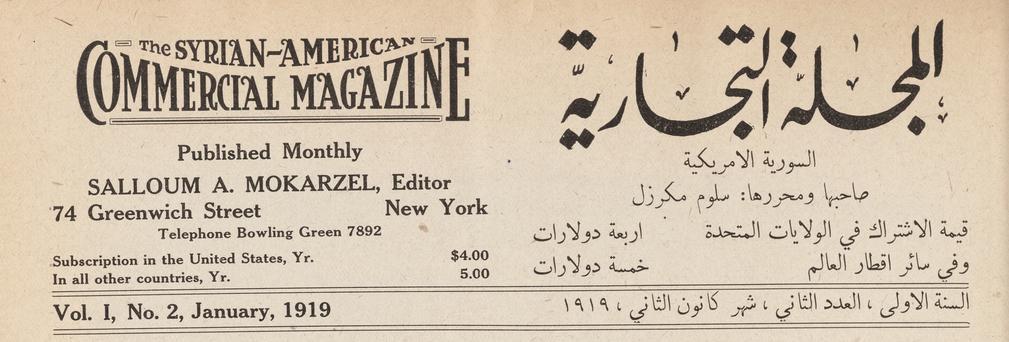
The larger of the two new collections is Al-Majalla al-Tijarriya [المجلة التجارية], or The Syrian-American Commercial Magazine, also known as Al-Alam al-Jadid [The New World].[2] This was an Arabic-language monthly journal published and edited by Salloum A. Mokarzel between December 1918 and June 1926. Salloum and his elder brother Naoum Mokarzel were towering figures in the political and intellectual communities of early Lebanese immigrants. While Naoum is known for founding and editing the influential and long-lived Arabic newspaper Al-Hoda, Salloum devoted the first decades of the twentieth century assisting in the family newspaper, publishing scholarly books, and editing his own publications. One of Salloum’s first publications was The Syrian-American Business Directory, co-written with Habib F. Otash and published in 1908. This bilingual register was planned as the first in a series of directories cataloging the commercial endeavors of Syrian immigrants to America. Though Mokarzel and Otash never published subsequent editions, it is nonetheless a valuable scholarly source for visualizing and understanding the working lives of early Lebanese immigrants in the United States.
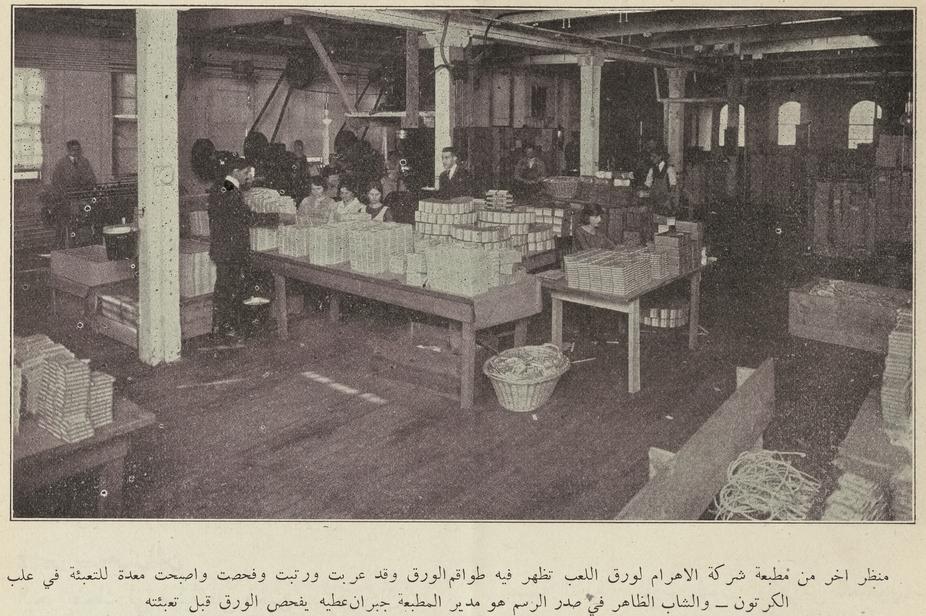
Mokarzel revisited his interest in commerce from a different angle with The Syrian-American Commercial Magazine. According to its tagline, the magazine was “devoted to the promotion of commercial relations between America and the Arabic-speaking peoples throughout the world;” however, unlike Salloum Mokarzel’s previous or subsequent significant publications, the journal was fully in Arabic. Thus, rather than serving a dual purpose of educating English-speakers about Syrian business acumen, this journal aimed to assist Arab-speaking businessmen in maintaining and growing existing companies. The Syrian-American Commercial Magazine was transnational in circulation and in its focus. First published in the aftermath of World War I, it contained regular articles assessing the impact of the Great War on various countries and reports on America’s role rebuilding Europe. It also profiled various trade markets—particularly anything related to the textile industry—and gave annual economic forecasts to aide in business decisions. The journal also translated and published material from other trade publications, including articles published by American bankers and diplomats. Finally, The Syrian-American Commercial Magazine published biographies of famous moguls such as Henry Ford and included richly illustrated profiles of successful Syrian-American businesses.
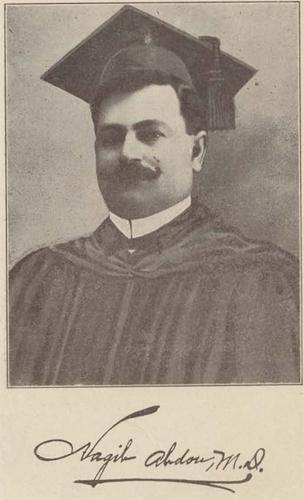
The second new collection in the Khayrallah Center digital archive consists of two books by Nagib Tanous Abdou: Dr. Abdou’s Travels in America and Commercial Directory of the Arabic Speaking People of the World (1908) and Medicine and Commerce: Two Books in One Volume (1922). Both Abdou and his books serve as a valuable contrast to the better-known publications of Salloum Mokarzel. Abdou was born in Baskinta, Lebanon, on February 10, 1876. His father, Tannous Abdou, was engaged in international commerce. In 1888, Tannous embarked on a long business journey and brought his twelve-year-old son Nagib with him; this journey lasted for at least four years. While the Abdou family was well educated, Nagib Abdou was neither a dedicated man of letters nor a merchant like his father, but instead a practicing doctor. Initially educated in French institutions in Beirut, Abdou obtained his M.D. from Laval University in Montreal, Canada in 1900. After graduating, he worked briefly in Canada and then immigrated to the United States to practice medicine. He worked in hospitals in San Francisco before taking a job as a physician and translator for the U.S. Immigration Service in New Orleans and Mexico in 1904. Around 1910, Abdou moved to New York City, where he worked as an assistant medical officer for the Port of New York until January 15, 1919. In addition to his work in the civil service, Abdou had a private practice on Greenwich Street, near Manhattan’s Syrian Colony. Abdou’s professional experience in both public health and with other immigrants led him to write the 1922 Arabic-language medical guide, Medicine and Commerce, to help new immigrants recognize and treat diseases common to urban communities.
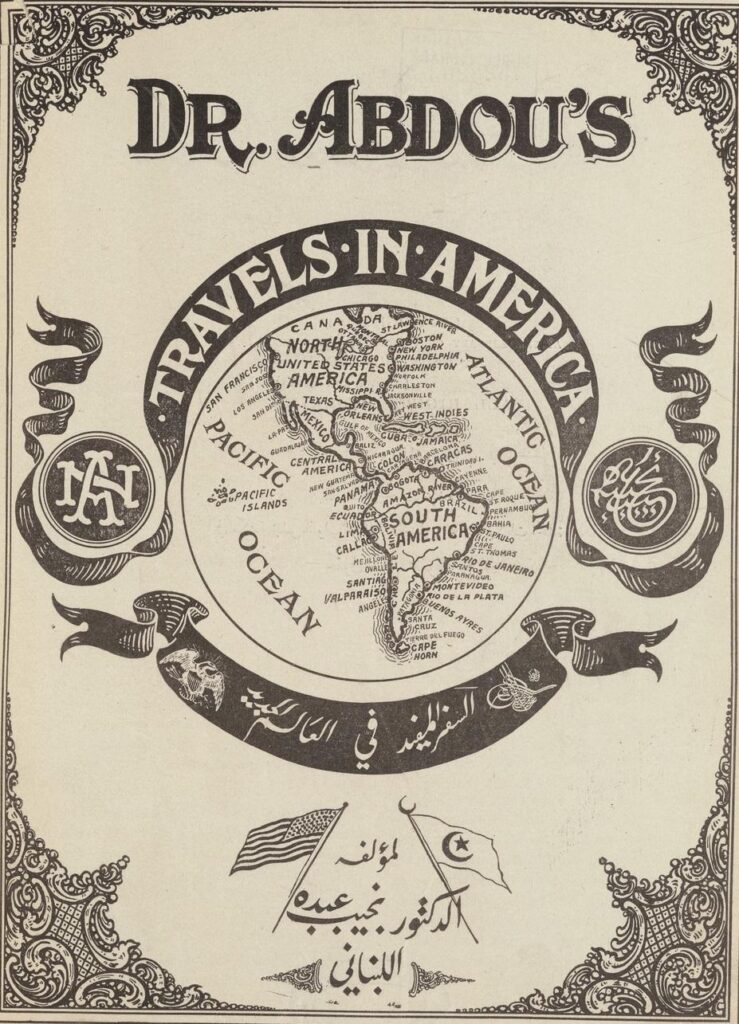
Abdou’s first work, Dr. Abdou’s Travels in America and Commercial Directory of the Arabic Speaking People of the World, was self-published in 1907 or 1908. It is a hybrid volume, consisting of a business directory, a how-to guide for fellow immigrants, and a personal travelogue. It has its genesis in Abdou’s youthful travels with his father and his own journeys as a young physician. Like Mokarzel’s contemporaneous directory, it was bilingual, with entries in both Arabic and English, for the same stated reason: to demonstrate to English speakers the economic contributions of Arab immigrants. However, Abdou’s directory has a greater geographical spread and contains additional (if idiosyncratic) information: countries, states, and even some cities have brief introductions and population estimates, and the volume has numerous advertisements. While the directory itself was intended for a mixed audience, the remainder of the book was printed primarily in Arabic, indicating that Abdou was writing to an audience of fellow immigrants. The directory portion of the book is followed by a collection of varied information to help Arabic-speaking immigrants navigate life and business in America. This section contains translated and reprinted text of custom duties, laws, and treaties and agreements about commerce between America and other countries. It also contains information to assist in life beyond work: it has lists of civic and religious groups and individuals; an inventory of Arabic-language newspapers throughout the world; telegraph rates; an explanation of the United States Postal Service; and more. The book concludes with a narrative of Abdou’s travels in North and South America, written in Arabic and illustrated with photographs and maps. Directories like Abdou’s and Mokarzel’s are always rich sources for historians and genealogists. However, sources like Dr. Abdou’s Travels in America and The Syrian-American Commercial Magazine, both written in Arabic for immigrants, demonstrate the many transnational characteristics of early Lebanese and Syrian business endeavors, and provide insight into the economic and cultural challenges that immigrants faced in the Americas.
These collections were digitized from the New York Public Library holdings with the support of Linda K. Jacobs. If you have material that you would like to preserve in the Khayrallah Center archive, please contact us. You may also make a tax-deductible contribution to the Khayrallah Center to support our continued digitization and preservation of Arab-language newspapers and books.
[1] For example, see Kalil A. Bishara, The Origin of the Modern Syrian (New York, NY: Al-Hoda Publishing House, 1914).
[2] The magazine began as Al-Alam al-Jadid [The New World], founded in 1909. When Mokarzel took control over it in late 1918, he changed the name and narrowed the focus of the publication. In 1925, Mokarzel returned the journal to its original title, but retained the topical focus on commerce.
- Categories:


